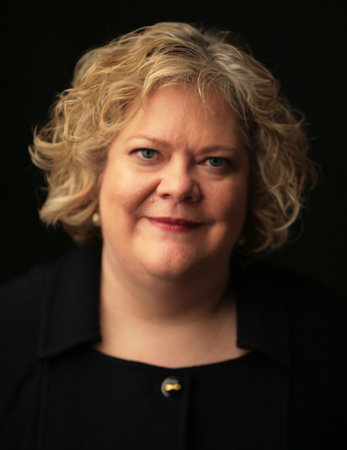In this episode co-hosts Micki Maynard and Mark Remillard discuss the elements of writing compelling business feature stories. They give advice on what aspects to focus on and how to organize a story in order to maintain reader engagement. They also note the importance of being ready to cast a wider net, or follow a different direction than you originally intended to based on the interviews you are having.
Transcript
[Intro Music]
Micki Maynard: How to Cover Money: Thinking like a business reporter even when you’re not one. Welcome to the Reynolds Center podcast. We’re coming to you from the Donald W. Reynolds National Center for Business Journalism. We’re based at the Walter Cronkite School of Journalism and Mass Communication at Arizona State University.
I’m Micki Maynard, Director of the Reynolds Center, and here with me is my co-host Mark Remillard. He’s a Cronkite Alumni and a reporter and anchor with KTAR News Radio in Phoenix. Hello Mark!
Mark Remillard: Hello again, Micki!
Maynard: Today we bring you Series 1, Episode, 3: The elements of business feature stories.
Remillard: Yes, business features can be daunting sometimes. So let’s get into it, Micki. When you’re about to approach writing a business feature, where do you begin?
Maynard: Well,the what you want to do is think of the one thing that you want people to remember from the story. And I always say, if you were sitting in a coffee shop and you overheard someone explaining your story to someone else, what would you want them to say? Or if you were talking to your mom, and your mom said, “Yeah, I had my friend read your story about X.” What do you want the X to be?
Remillard: I think what might be difficult for a lot of people to grasp features, or grasp themselves around a feature story, is that sometimes there’s no news peg. A lot of people want to see something that’s current or happening and begin with that. So how do you how do you get past that?
Maynard: The second thing you have to think about is, why are you doing the story? So, a news peg makes it easy. You know, it’s someone’s anniversary, or someone was just named president of the university, or someone has a new job as a CEO. But sometimes there isn’t that. Sometimes you don’t have that. You have to come up with a compelling reason why that person should be profiled, or why it’s time to do the feature story. And honestly, you can usually do that. Sometimes you just have to dig a little bit, maybe Google a little deeper. Look at anniversaries, look at tenure, look at a sea change for the institution and come up with the reason why we’re doing the story.
Remillard: So once you have maybe a story in mind or a feature in mind, how do you start to organize it, or at least get get moving on it?
Maynard: Well, assuming that your editor has told you to go ahead and work on the story, what you want to do is make a list of the ideas that you’d like to have included in the story. So you’re writing about someone who has just opened a new store. They happen to be a newcomer to your town. They might be Latino. They might have been the first person in their family to go to college. They may be the first person to be selling this kind of item in your city. So you want to write down all those things. And I think one of the things that trips people up when they write business features is that they’re not organized, that they think, “Oh, I’m going to have all this space to play with. And I can say all these things in the story.” But to be honest, the best written business feature stories and best written any feature stories are well organized. So I want you to be organized too.
Remillard: So when it comes to organization, you know, a feature can be long. Sometimes they can be, as we said, daunting to try and organize everything out, especially when you don’t have – at least in your head – this, here’s the newest thing on top, and let’s go down from there. How do you start to put it together and organize everything into an actual story and stay focused?
Maynard: David Kandow, who I mentioned earlier in our podcast, he was known as the host whisperer at NPR. And David always advised everyone to have a beginning, a middle and an end. You know, in basic news writing, we’re learned this pyramid style, where you put the most important thing at the top and then rank everything in order. But with a feature story, you have to keep people engaged. You have to keep them reading. So you want to almost have a play in three acts, where you open the scene, you get to the meat of the story, you explain what’s happened and then you bring it to some kind of an end. Don’t just let feature stories peter out. I read story after story where there was wonderful stuff at the top and it’s almost like, well, now I have to fill another 700 words or two minutes on the air, and I’m just gonna throw stuff in. You don’t want to be that person.
Remillard: So when you’re going through the process of working on a feature story, we’ve talked a lot about interviewing. Interviewing, in and of itself, is somewhat of an art form to work everything out. What are you looking for to do, and what are you looking for when you’re doing an interview?
Maynard: So what you’ve already done is you’ve made a list of the ideas that you want included in the story. And as you’re doing interviews, you want to notice patterns. So if you start to hear ideas repeated, you’ve probably talked to enough people about that idea, and you can just cut that from your list. Conversely, if there’s something that you want represented in the story and you haven’t found someone to say it, and you haven’t found an expert with that conclusion, you probably need to cast your net a little bit broader and maybe do a little bit more work on the story.
Remillard: And I think we’ve talked a lot about keeping your ears open. One thing that I’ve noticed a couple times, for example, with the Austin story that we did, we mentioned in the previous podcast, there were things that everybody kept telling me that I wasn’t expecting. And once I started hearing that from three, four people, it actually almost like sent me in a completely different direction, where I didn’t think it was going to go. And so watching for patterns, both in a way that makes it obvious that you’re on the right track or on the wrong track is important.
Maynard: Yeah, and you always have to be open to the possibility that you’re completely wrong and that your story is going to wind up in a place that you didn’t expect it to. One of the things I want to counsel people to do when that happens is keep your editor informed, because you’ve promised that you’re going to turn in a story on X and it starts to become a story on Y. It’s a good idea to circle back to your editor and explain “I’m still working on this, but I’m coming up with this conclusion, and if…”



